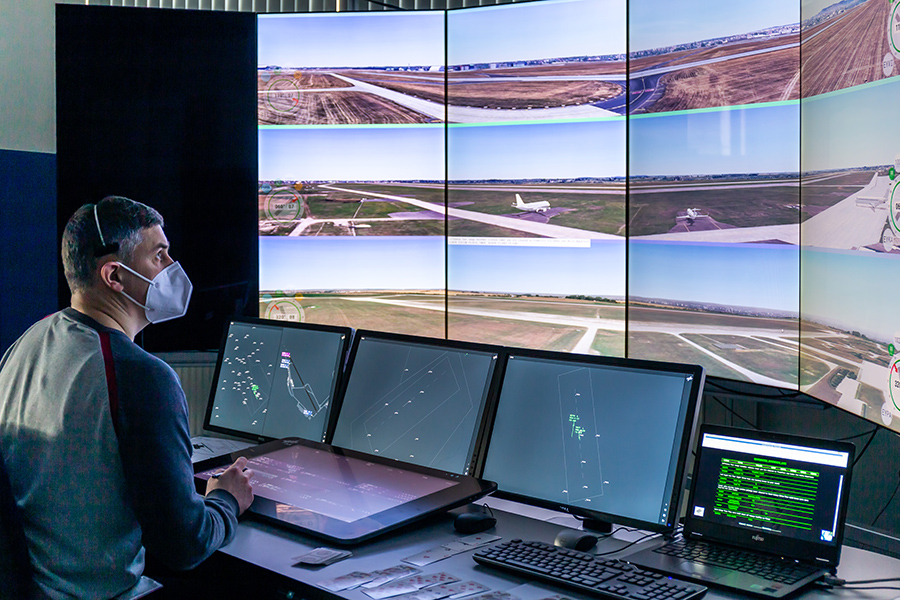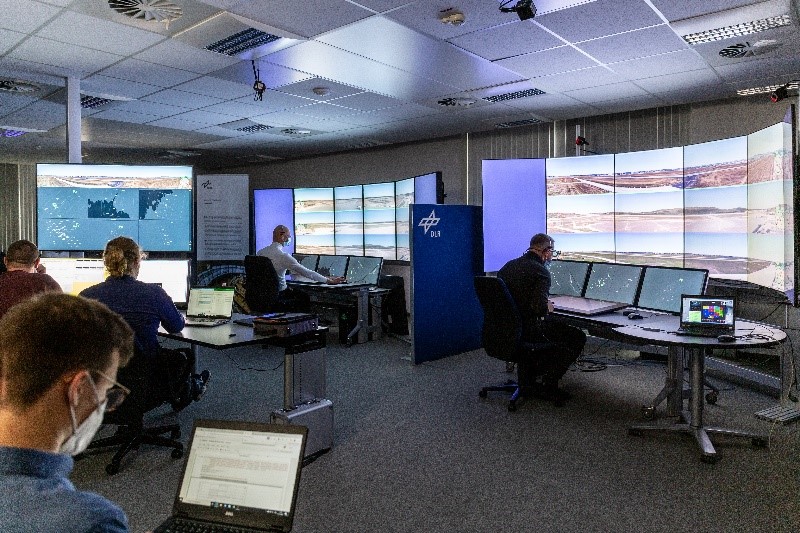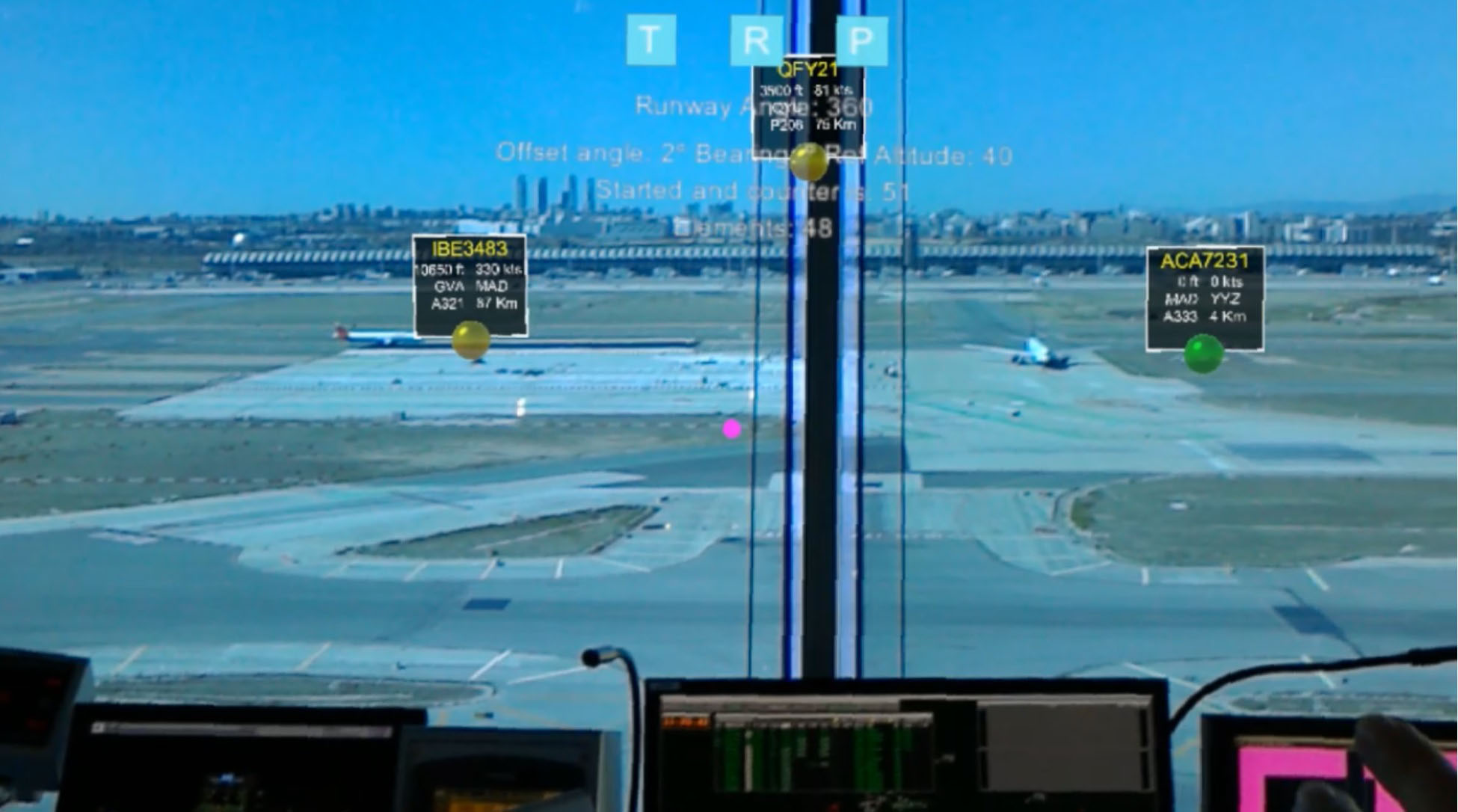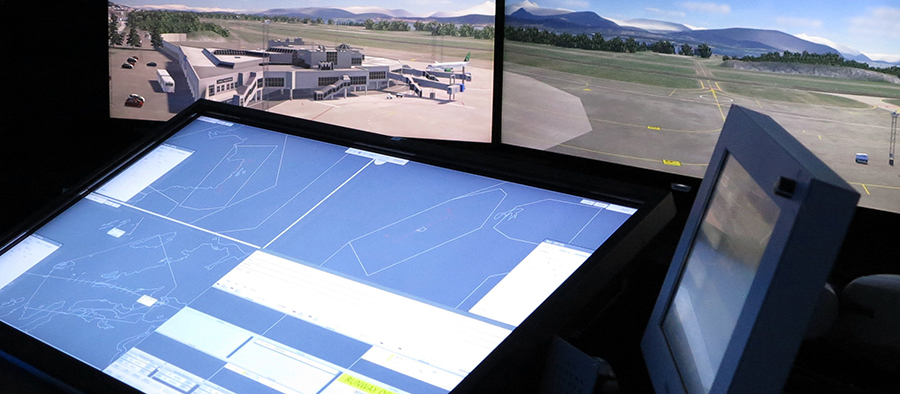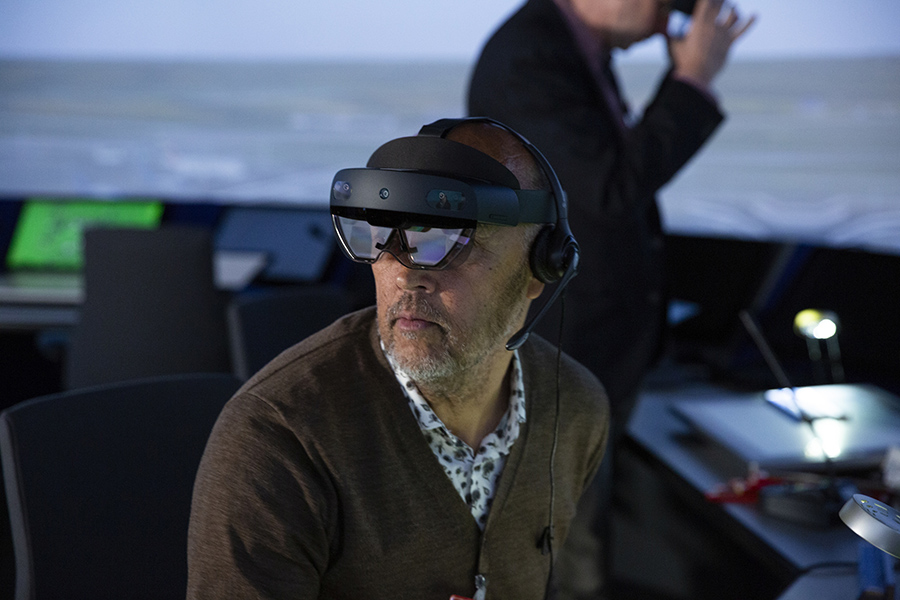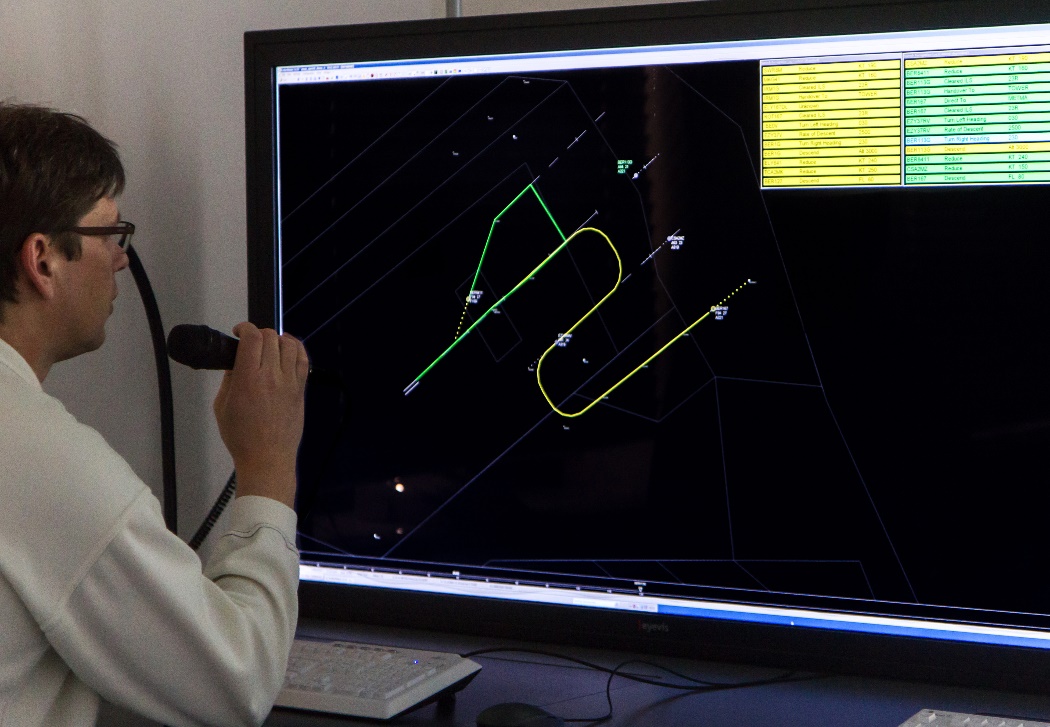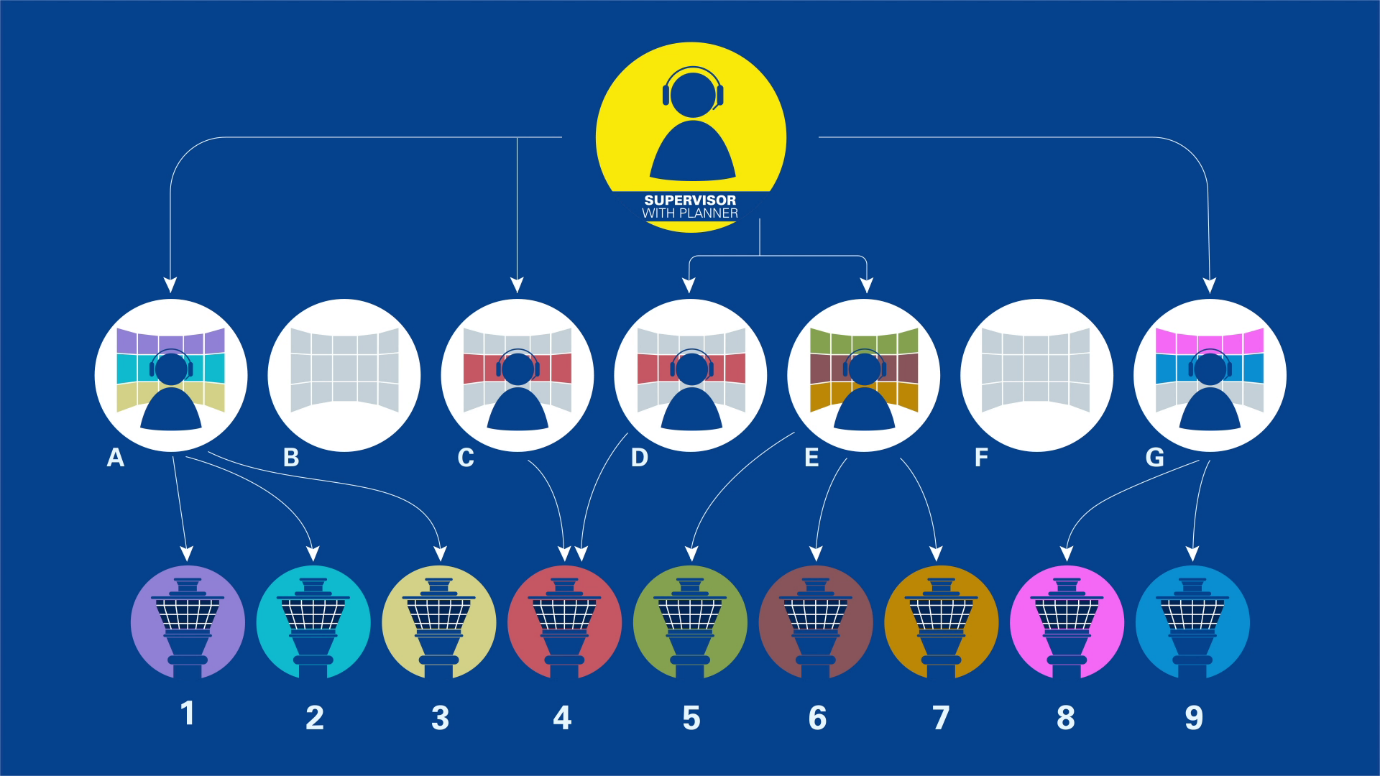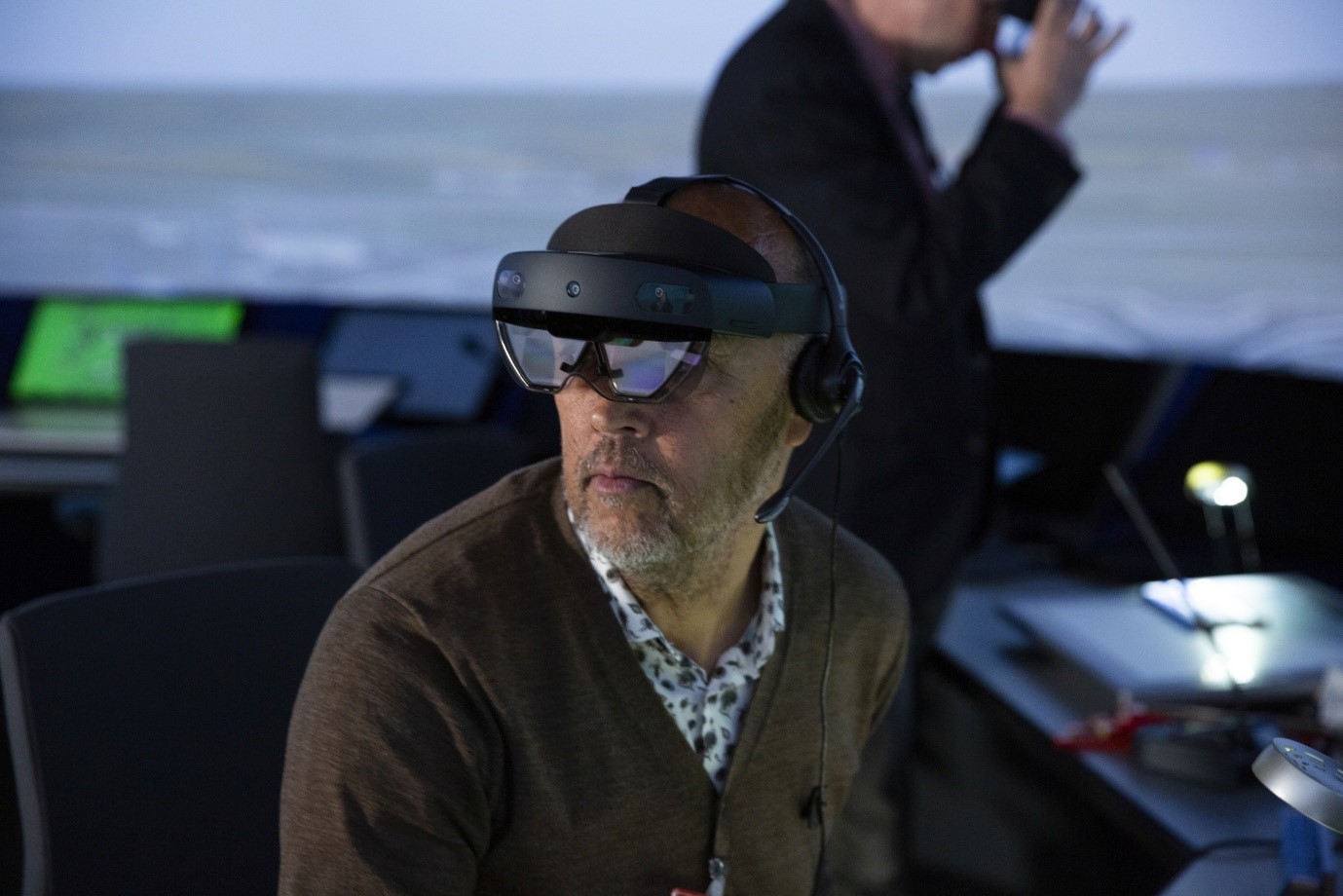Europe’s aviation industry is experiencing a sharp rise in air traffic. Air navigation service providers are therefore faced with various challenges to ensure that flight control remains efficient, on time and safe. One way to address these challenges is through increased digitalisation.
The “Digital Technologies for Tower” (PJ05-W2 DTT) project is contributing to this in two ways. First, it is developing a remote aerodrome air traffic service in which services from various aerodromes are combined in a centralised control room independent of an airport’s location. Second, it is validating innovative human-machine interface modes and related technologies in different airport towers. The project aims to validate and progressively mature these solutions for the benefit of the ATM network in terms of safety, capacity, efficiency and flexibility.
Multiple remote tower and remote tower centre (PJ.05-W2-35 /Release 10): consists of support functionalities in the multiple remote tower module, in order to allow flexible allocation of airports controlled from one module by one controller. It also offers the remote tower centre (RTC) supervisor support tools to assist in the task of allocating controllers and aerodromes in an RTC. It enables a flexible and dynamic allocation of airports connected to different remote tower modules over time. The solution also addresses harmonised procedures across all the remote tower modules in the RTC to make it easier for controllers to hold endorsements for more than three airports. More about the solution
Virtual/Augmented reality applications for tower (PJ.05-W2-97.1 /Release 10): Virtual and augmented reality (V/AR) serves to ease staff tasks and enable more seamless operations. This candidate solution continues work already performed during SESAR 2020 wave 1 and aims to support tower controllers through the use of tracking labels, air gestures and attention guidance thanks to advanced human machine interface (HMI) interactions. The V/AR blends real world images with computer-generated data (augmented reality) in real-time, so that visual information can be enhanced to improve identification and tracking of aircraft (or vehicles) on and around the airport. In low visibility, synthetic vision can show digital georeferenced data that supplement the missing real vision (virtual reality). More about solution
The project’s solutions aim to provide shorter travel times and better point-to-point connections, as well as increase flight safety and controller productivity. In DTT, a large group of international partners focuses on multiple solutions for future airports.
Find out more on the project website.


